Identifying core problems
By analysing reporting data, it was understood that the majority of support needs concerned "session scheduling" such as moving all, or some sessions to a different day or time due to household schedule disruption. These scenarios made up around 70% of total costs. Further to this, 66% of all service management was handled by care team members. Without changing customer behaviour and empowering them to leverage the Cluey Customer Hub—where they could manage their own scheduling needs—the volume of customers utilising the existing support channel would grow exponentially as the customer base grew.
While much effort had been made to enable self-management features for customers, the uptake was only 33% due to habits customers formed like replying to emails, or calling and having their requests managed—albeit with some friction—by care team members. By analysing support cases in more detail, however, four key contributing themes emerged:
1) Missing features
In this scenario, the customer visited their Cluey Hub to re-schedule a future session, however, changing sessions beyond the immediate upcoming one was not support and a support case was lodged instead. This resulted in back and forth communication with the customer later to clarify a new time for the session.
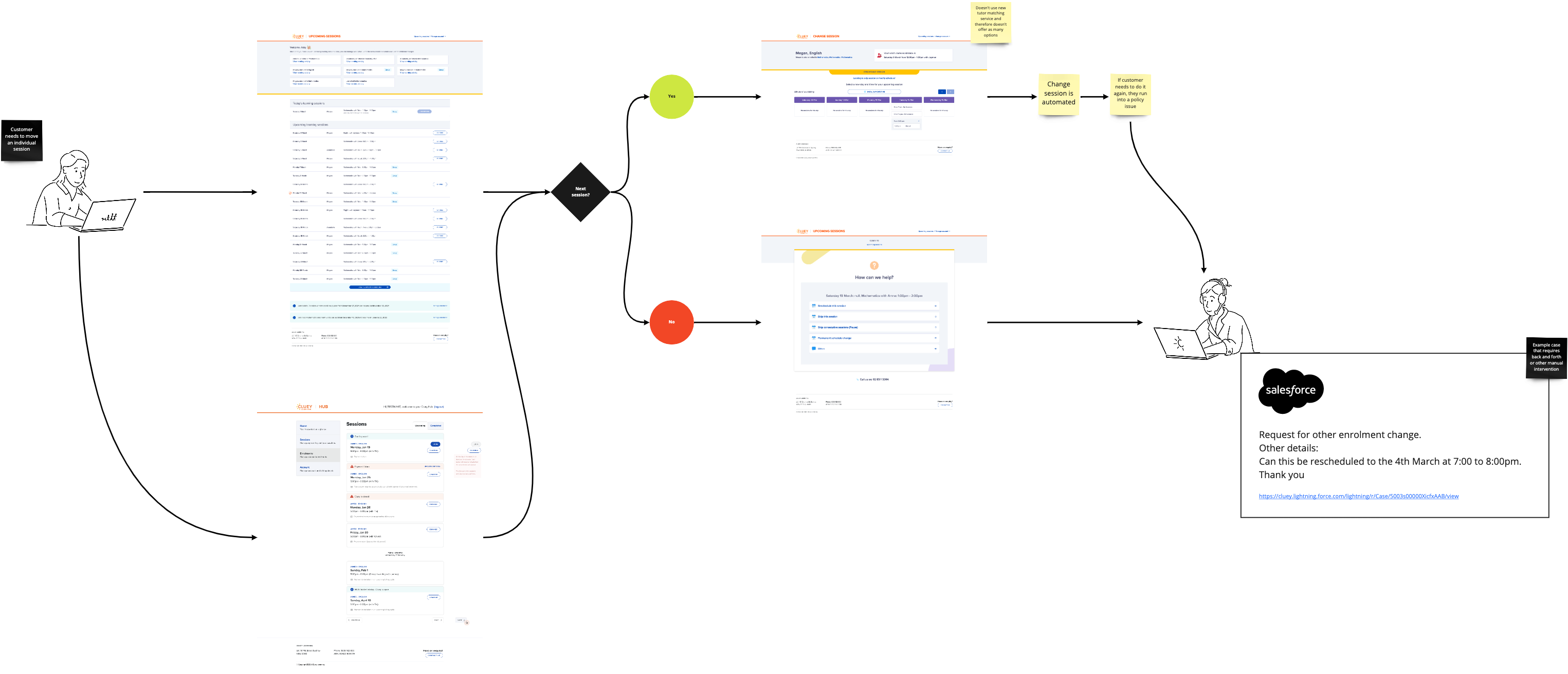
2) Replying to comms
In this scenario, the customer replied to past communications received from Cluey as a means to request schedule changes, once again creating a support case which required manual resolution from the care team.

3) Do it for me
In this scenario, a customer bypassed all available scheduling features in the Cluey Hub and found a "free-text" contact form to request a schedule change, which raised a support case that needed manual processing.

4) Policy confusion
We also received insight into why sessions were skipped rather than re-scheduled by utilising an end-of-flow questionnaire in the Cluey Hub. The reasons pointed to confusion about service fee policies, whether or not Cluey was open on public holidays and how many times a session could be re-scheduled.
Customer pain-points
By mapping out real customer experiences, listening to call recordings and reading through email correspondence chains, the various friction customers experienced became clear. These revealed the fallacy that synchronous support offered superior service. We highlighted the following pain-points for customers when interacting with Cluey:
- Long wait times on the phone
- Lack of visibility about when and how cases are managed
- Delayed responses to email based cases
- Discovering some schedule management features weren't available when trying to do it themselves
- Finding they were better off skipping a session than trying to re-schedule it, especially if it was late notice
- Losing session fees due to confusion around policies, and
- Managing schedule change over the phone when calendars and tutor availability weren't visible to both parties at the same time.
The opportunity
A massive reduction on the "support cost targets" could be made by addressing customer needs in the following ways:
- Direct inbound comms (sms/email and calls) to appropriate self-managed channels, and
- Enable future session re-scheduling for all sessions within the Cluey Hub.
 A timeline view of how a relationship with a household might evolve during stages of a school year.
A timeline view of how a relationship with a household might evolve during stages of a school year.
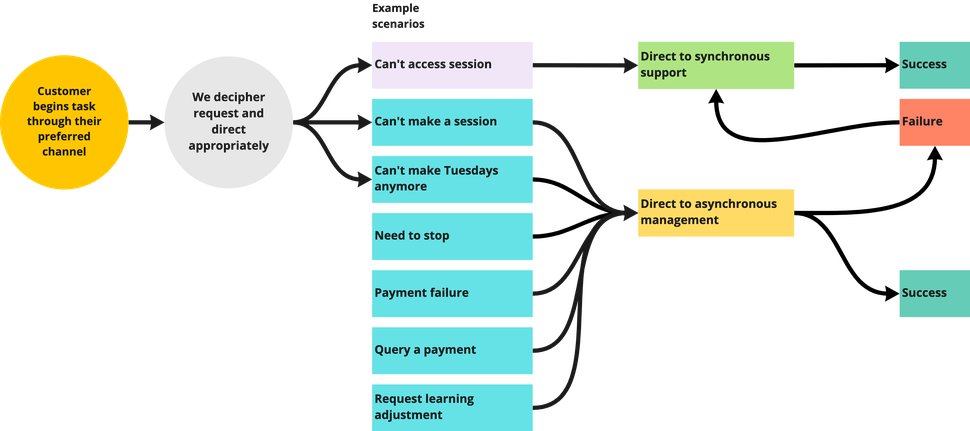 An example of how channel redirection would be managed.
An example of how channel redirection would be managed.
 Building a strong relationship foundation enabled higher value initiatives.
Building a strong relationship foundation enabled higher value initiatives.
 This basic trigger encapsulated a typical starting point, forking off in many directions depending on the customer default channel.
This basic trigger encapsulated a typical starting point, forking off in many directions depending on the customer default channel.
 The journey map demonstrated how Cluey would direct customers from inbound phone calls, email or text messages as well as direct Cluey Hub access if they sought to amend session schedules, temporarily or permanently.
The journey map demonstrated how Cluey would direct customers from inbound phone calls, email or text messages as well as direct Cluey Hub access if they sought to amend session schedules, temporarily or permanently.
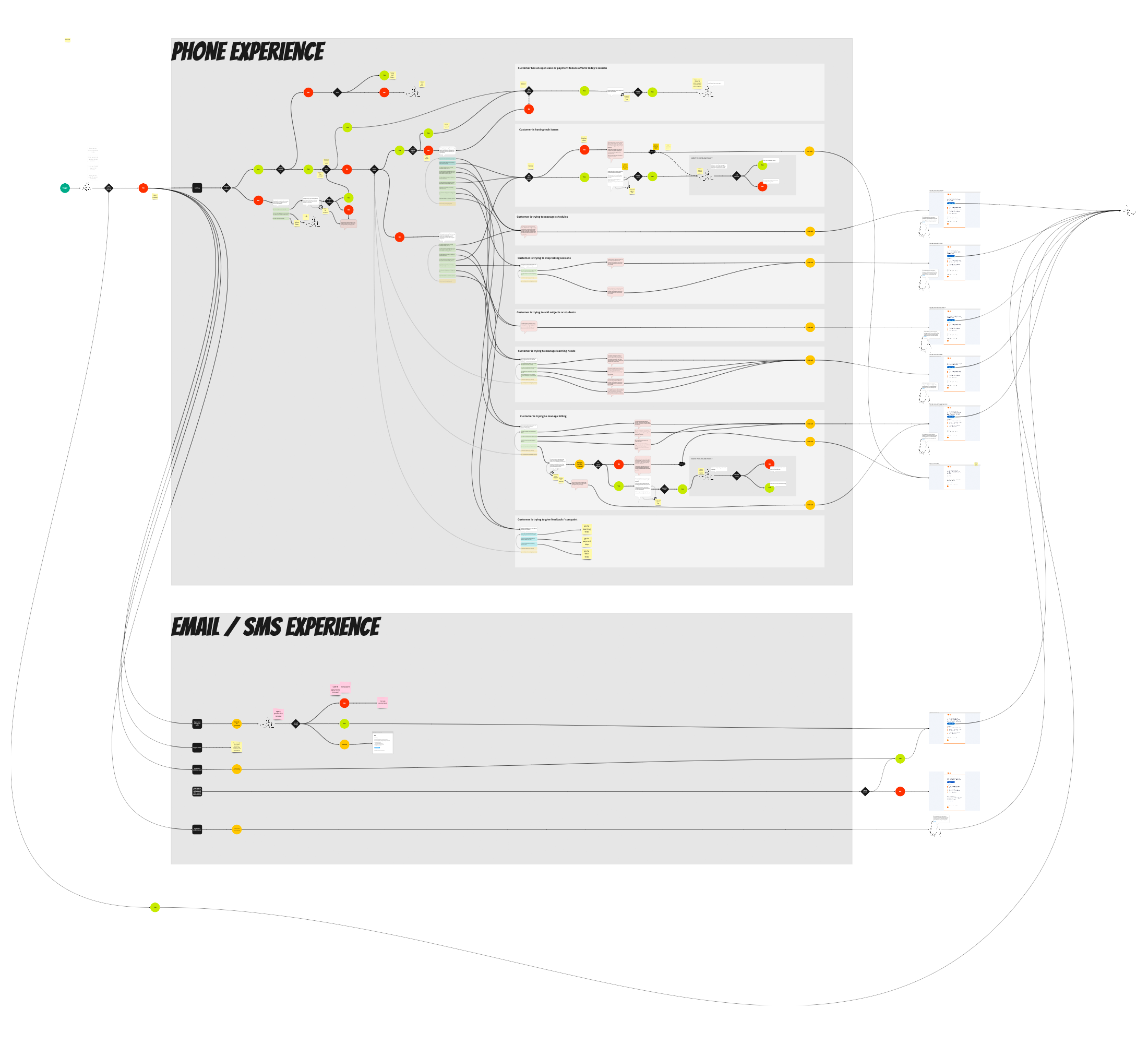 The phone flow considered call routing based on known information about the incoming caller and then prompted them with applicable menu options.
The phone flow considered call routing based on known information about the incoming caller and then prompted them with applicable menu options.
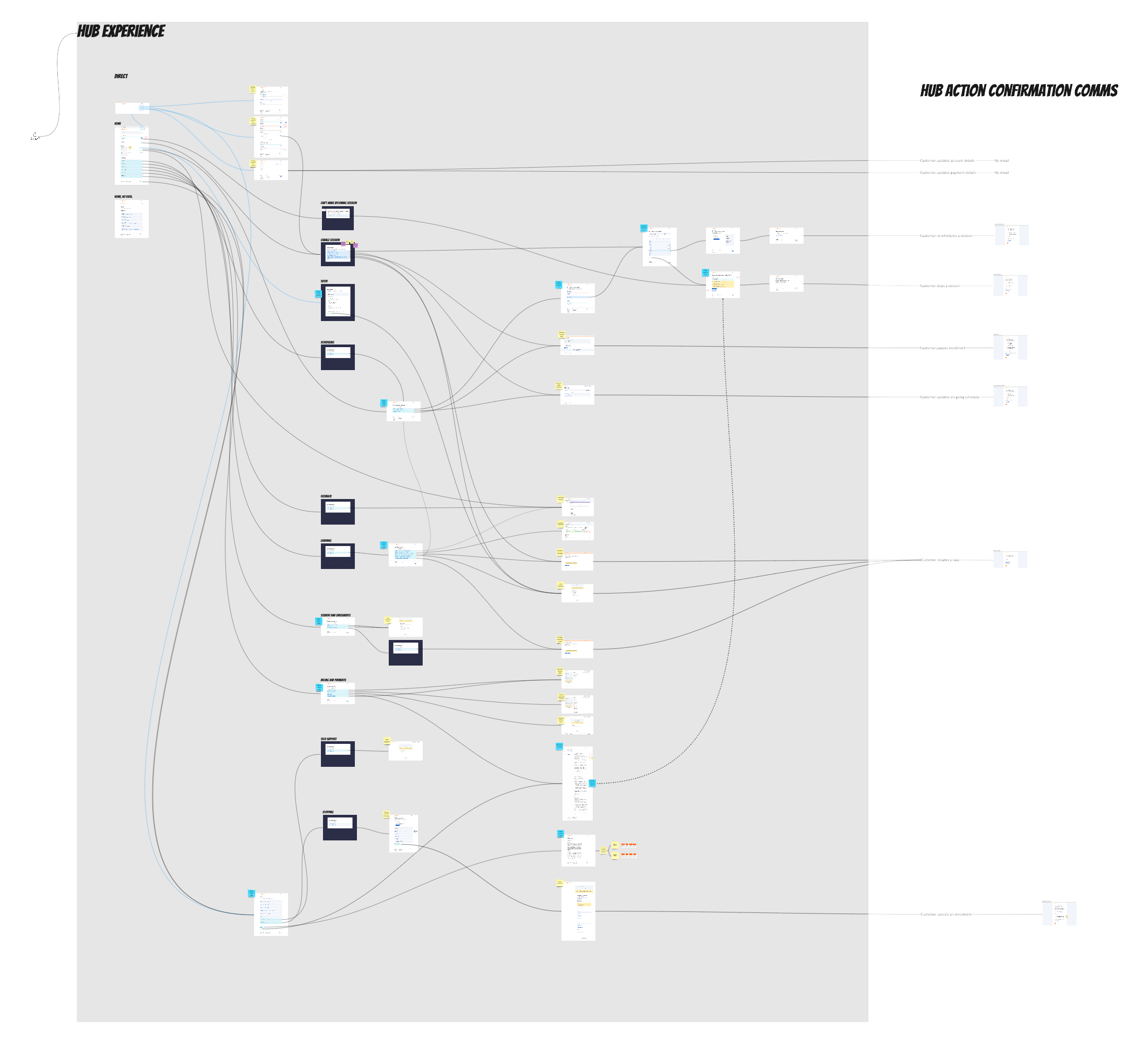
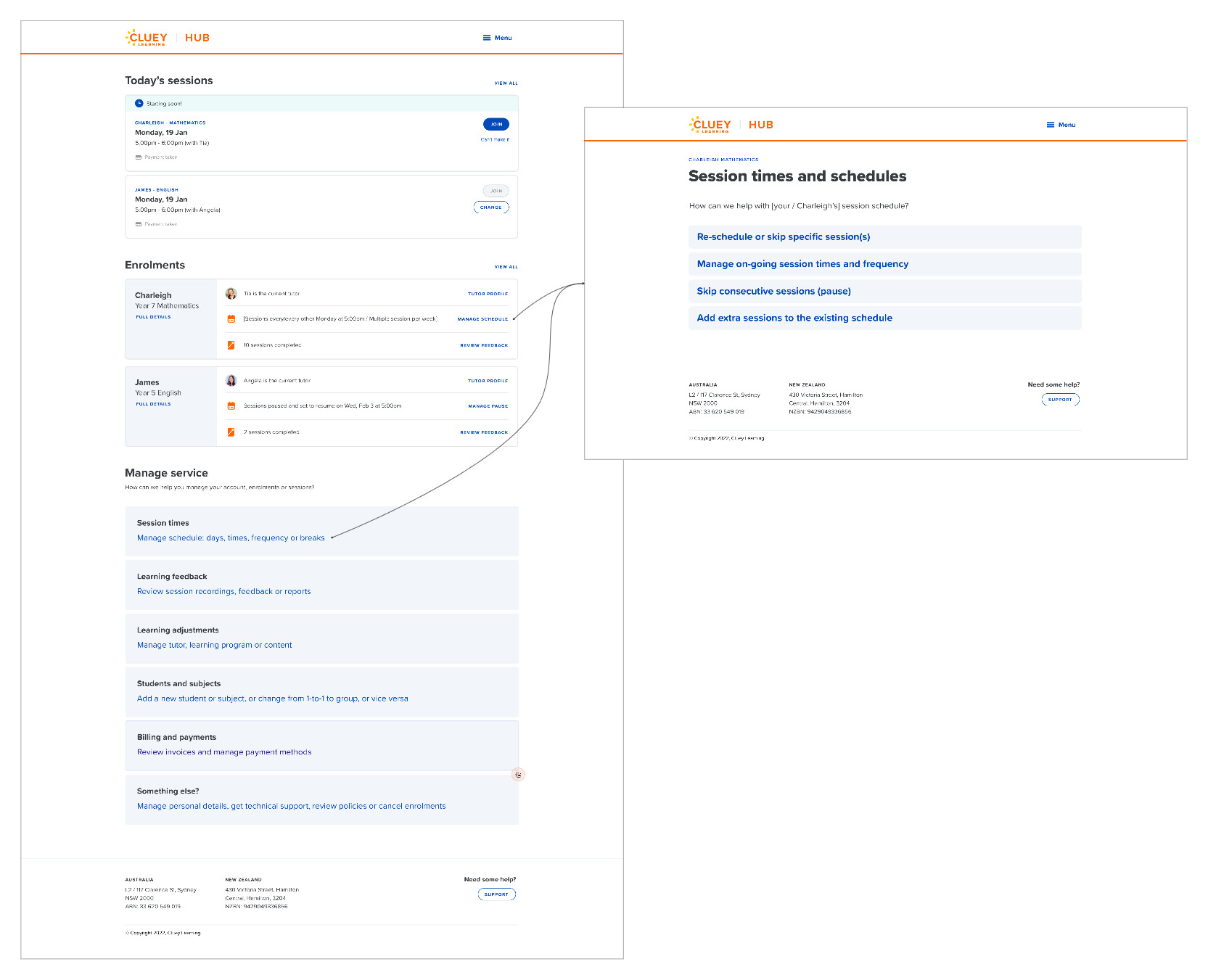 The home screen signalled schedule change starting points and then captured more specific intent.
The home screen signalled schedule change starting points and then captured more specific intent.
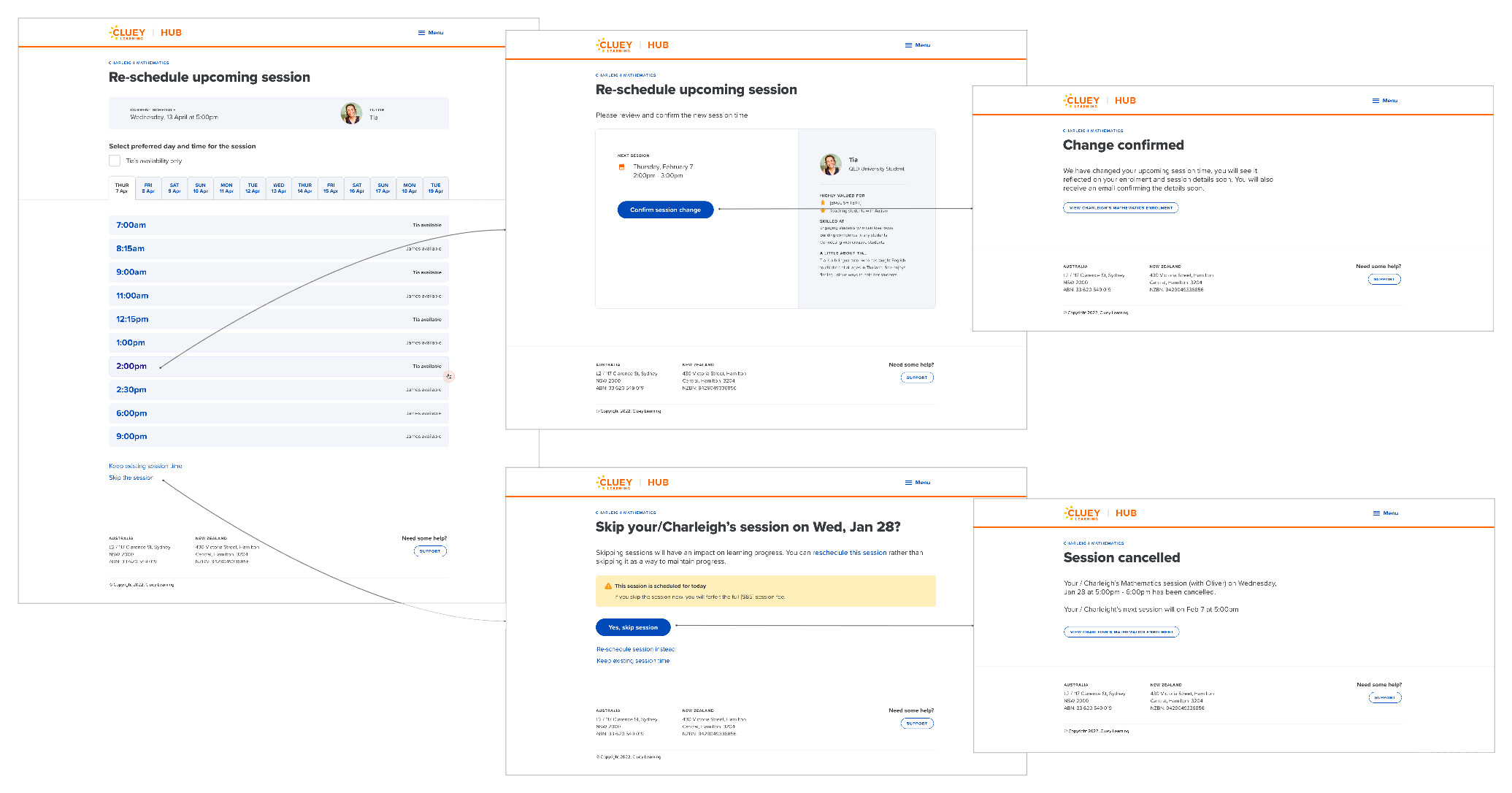 To promote learning, when "change an upcoming session" was chosen, alternate time options would appear before a "skip" option. If skipping the session was chosen, clear policy implications were displayed.
To promote learning, when "change an upcoming session" was chosen, alternate time options would appear before a "skip" option. If skipping the session was chosen, clear policy implications were displayed.